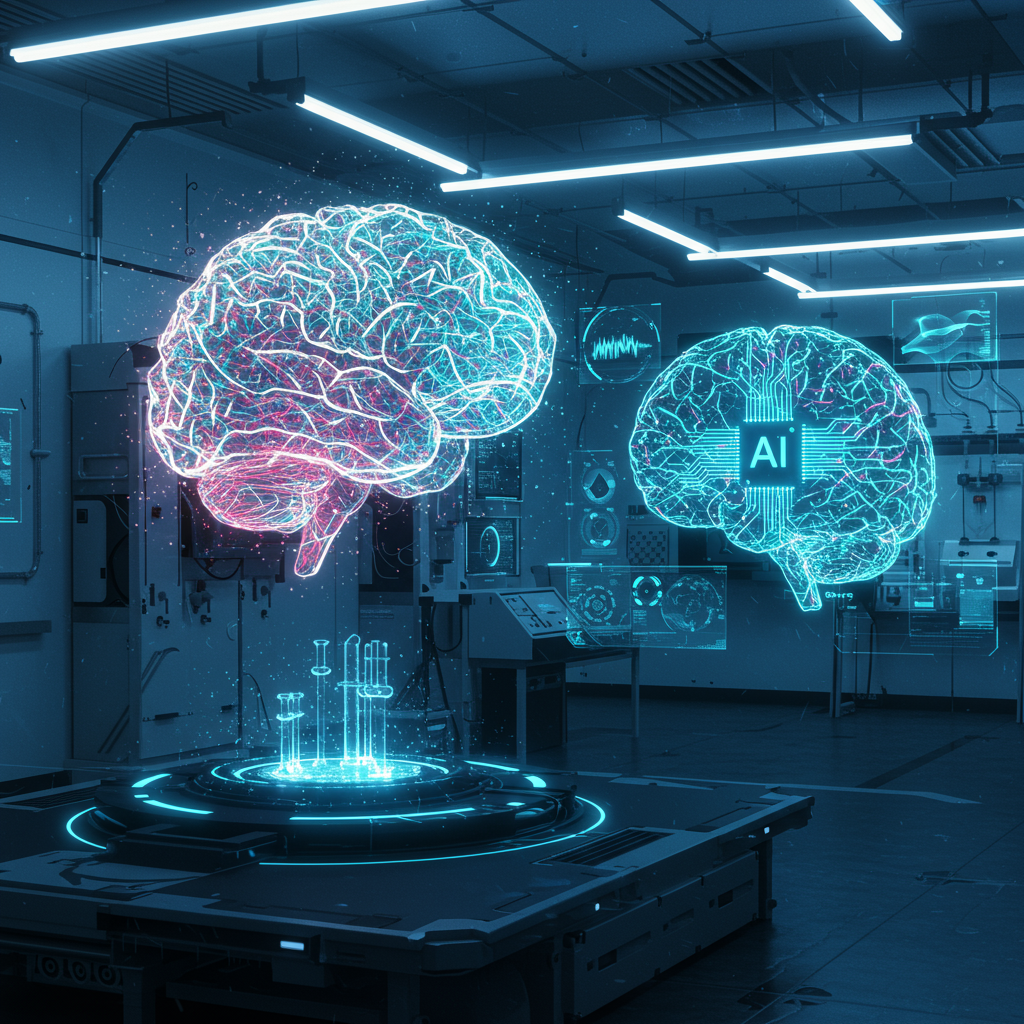The quest to understand the human brain is one of science’s greatest challenges. What if the key lies not just in biological study, but also in the complex algorithms of artificial intelligence? Leading researchers are turning to AI, specifically artificial neural networks, not merely for their ability to perform tasks, but as powerful tools to decode the mysteries of human intelligence and unlock new ways to interact with the mind.
One such pioneer is Martin Schrimpf, who heads the NeuroAI Lab at the Swiss Federal Institute of Technology Lausanne. His ambitious goal is to construct a “digital twin” of the brain using these AI models, which are loosely inspired by the interconnected structure and communication patterns of biological neurons.
Mapping the Mind: AI as a Research Tool
Schrimpf’s approach is systematic. His team tests humans on cognitive tasks, such as those related to language or vision. They then compare the resulting human behavior and brain activity data with the performance and internal workings of AI models designed to execute similar tasks. By analyzing how closely the AI aligns with human data, they can refine their models, creating increasingly humanlike simulations of brain function.
This methodology requires vast amounts of data and diverse AI models. To facilitate this, Schrimpf developed Brain-Score in 2017. This open-source platform hosts nearly a hundred human neural and behavioral datasets, allowing researchers worldwide to benchmark thousands of AI models against human performance and brain recordings. Brain-Score provides a quantitative measure of how well artificial models mimic real brain function, offering valuable insights into which computational approaches best reflect biological intelligence.
Initial findings using this comparative approach suggest intriguing similarities across different cognitive domains. For instance, Schrimpf’s work indicates that the brain’s visual and language systems may process information in fundamentally similar ways, hinting that the method for building mental representations of everything from objects to words might be more consistent across different brain areas than previously assumed.
Deciphering Brain Signals with AI
Beyond comparing task performance, AI is also proving adept at directly decoding brain activity. Cutting-edge research is using artificial neural networks with noninvasive techniques like magnetoencephalography (MEG), which measures magnetic fields from neural electrical currents.
For example, scientists have trained AI language models to decode MEG data recorded while people type sentences. The AI could reconstruct typed sentences with notable accuracy, suggesting the model was interpreting not just abstract thought, but potentially also motor signals related to the physical act of typing. Further analysis of high-resolution MEG data during typing has revealed that the brain processes language hierarchically, moving from overall context and meaning down to words, syllables, and ultimately individual letters for output. AI helps researchers dissect these complex, dynamic neural codes that allow the brain to process sequential linguistic units without interference.
These decoding efforts, while still in early stages and limited by current hardware, demonstrate AI’s power in translating raw neural data into understandable insights about cognitive processes.
From Understanding to Influence: Controlling Brain Activity
The potential of NeuroAI extends beyond just understanding. Schrimpf and colleagues achieved a significant breakthrough demonstrating AI’s capacity to influence brain activity. In a 2023 study, they trained an AI model to generate specific sentences designed to either activate or suppress neural activity in targeted brain regions when read by a human. Brain scans confirmed the AI’s predictions – the generated sentences effectively altered neural activity as intended.
This marked the first instance of researchers achieving noninvasive control over high-level brain activity using AI-generated stimuli. This capability opens exciting, albeit future, possibilities for therapeutic interventions. Imagine using AI-generated content tailored to influence specific brain states to:
Develop targeted therapies: Create AI models based on conditions like dyslexia or depression to optimize treatment strategies, potentially guiding both noninvasive approaches (like tailored text) and more invasive ones (like deep brain stimulation).
Aid communication: Pave the way for noninvasive brain-computer interfaces that decode thoughts into language for individuals with communication impairments.
Induce perceptual experiences: If cognition can be accurately modeled, AI might eventually be used to reliably induce specific, measurable perceptual states.
While influencing complex functions like decision-making or general memory remains a distant goal, the ability to precisely target and alter neural activity noninvasively using AI is a transformative step.
The Power of Deep Learning: How AI Models Work
The AI models driving this research are typically based on deep learning, a subset of machine learning utilizing multi-layered artificial neural networks. Unlike simpler models, deep learning networks can process raw, unstructured data and automatically extract complex features, learning through iterative adjustments of internal parameters (weights and biases) based on errors via a process called backpropagation.
Artificial neural networks possess a structural similarity to biological neural processing units. Their ability to reflect neural activity consistent with the brain and mimic human behavior makes them valuable computational models for neuroscience. Though complex deep learning models can sometimes act like “black boxes” where the internal decision-making is opaque, their demonstrated accuracy in aligning with human data makes them powerful tools for generating hypotheses about brain function, even if the exact internal mechanisms aren’t fully understood. This represents a shift from classical neuroscience, which often focuses purely on detailed mechanistic understanding.
Navigating the Ethical Landscape
The rapid advancements in NeuroAI, particularly the potential to predict and influence human thought and behavior, raise critical ethical considerations. Schrimpf himself expresses concern about the speed of development outstripping our societal and legal preparedness.
The risks associated with generative AI are multifaceted:
Data Privacy and Security: Working with sensitive neural data requires robust safeguards against leakage or misuse. AI systems integrated into research or potential clinical tools could inadvertently expose confidential information if not properly secured.
Risks to AI Capabilities: Models could be vulnerable to attacks like prompt injection or data poisoning, potentially leading to unreliable outputs or manipulative influence if used in therapeutic or communication contexts. Hallucinations (producing plausible but incorrect information) are also a concern when relying on models for critical applications.
Impact on Human Cognition: Beyond malicious use, reliance on AI tools for tasks like remembering or critical thinking raises questions about potential cognitive impacts. While helpful for offloading mundane tasks, over-reliance could potentially atrophy skills if humans surrender “intellectual autonomy” by letting AI think for them rather than with them.
Addressing these risks requires proactive engagement with ethics experts and the development of comprehensive legislative frameworks. As AI capabilities advance, ensuring secure-by-design principles and maintaining a “human in the loop” for critical applications are crucial steps in building trust and mitigating potential harms.
Intelligence: Biological or Computational?
Ultimately, the success of AI in modeling brain function contributes to a profound philosophical discussion: is intelligence reducible to computation? Schrimpf suggests that the ability of AI models, despite their simplified architecture compared to biological brains, to predict human neural responses indicates that intelligence is a pattern of information processing not exclusive to biological systems.
He finds this prospect exciting, viewing it as an opportunity to better understand ourselves. From this perspective, what makes the human experience unique is not the underlying computational building blocks, but the rich and complex collection of individual life experiences built upon that foundation.
As researchers continue to refine AI models and benchmark them against the intricate workings of the human brain, the boundaries between artificial and biological intelligence will likely blur further, promising revolutionary insights into the mind and potentially transformative applications for health and well-being.




